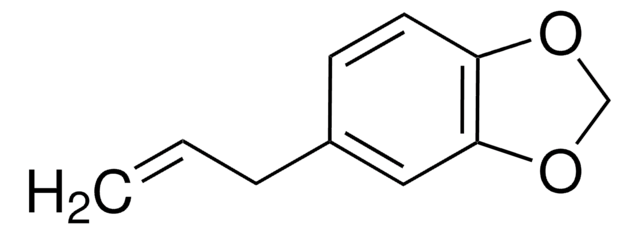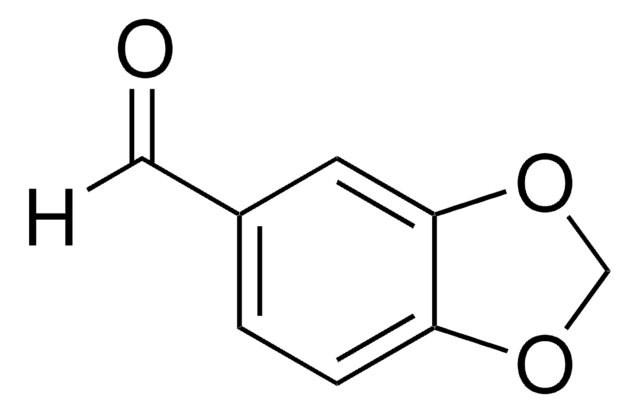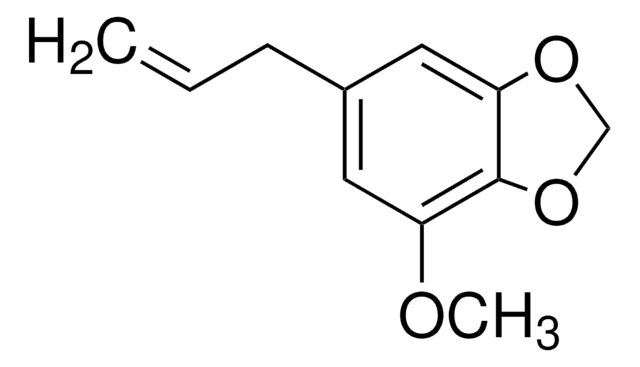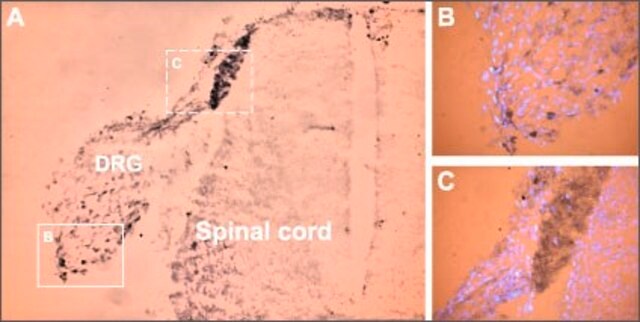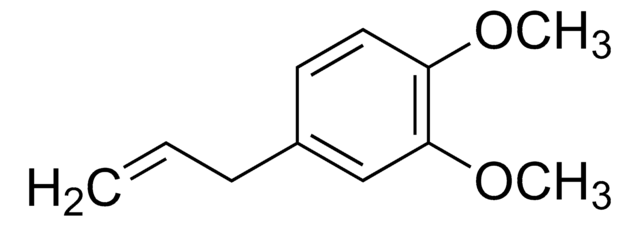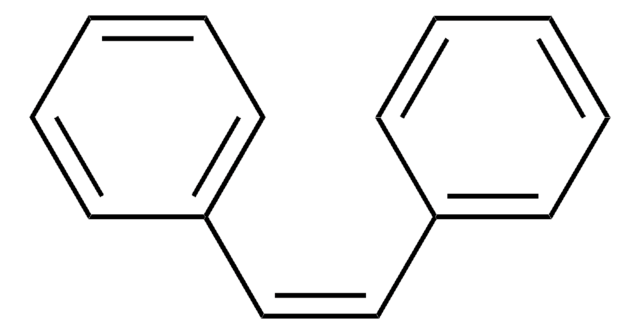Kluczowe dokumenty
S9652
Safrole
≥97%
Synonim(y):
4-Allyl-1,2-methylenedioxybenzene, 5-Allyl-1,3-benzodioxole
About This Item
Polecane produkty
ciśnienie pary
1 mmHg ( 63.8 °C)
Poziom jakości
Próba
≥97%
kolor
yellow
współczynnik refrakcji
n20/D 1.537 (lit.)
bp
232-234 °C (lit.)
mp
11.2 °C (lit.)
gęstość
1.095 g/mL at 25 °C (lit.)
Zastosowanie
metabolomics
vitamins, nutraceuticals, and natural products
ciąg SMILES
C=CCc1ccc2OCOc2c1
InChI
1S/C10H10O2/c1-2-3-8-4-5-9-10(6-8)12-7-11-9/h2,4-6H,1,3,7H2
Klucz InChI
ZMQAAUBTXCXRIC-UHFFFAOYSA-N
Szukasz podobnych produktów? Odwiedź Przewodnik dotyczący porównywania produktów
Opis ogólny
Zastosowanie
Działania biochem./fizjol.
Inne uwagi
Hasło ostrzegawcze
Danger
Zwroty wskazujące rodzaj zagrożenia
Zwroty wskazujące środki ostrożności
Klasyfikacja zagrożeń
Acute Tox. 4 Oral - Carc. 1B - Muta. 2 - Skin Irrit. 2
Kod klasy składowania
6.1C - Combustible acute toxic Cat.3 / toxic compounds or compounds which causing chronic effects
Klasa zagrożenia wodnego (WGK)
WGK 3
Temperatura zapłonu (°F)
212.0 °F - closed cup
Temperatura zapłonu (°C)
100 °C - closed cup
Środki ochrony indywidualnej
Eyeshields, Faceshields, Gloves, type ABEK (EN14387) respirator filter
Wybierz jedną z najnowszych wersji:
Masz już ten produkt?
Dokumenty związane z niedawno zakupionymi produktami zostały zamieszczone w Bibliotece dokumentów.
Produkty
DNA damage and repair mechanism is vital for maintaining DNA integrity. Damage to cellular DNA is involved in mutagenesis, the development of cancer among others.
Carcinogenesis and Epigenetics
Protokoły
US EPA Method 8270 (Appendix IX): GC Analysis of Semivolatiles on Equity®-5 (30 m x 0.25 mm I.D., 0.50 μm)
Nasz zespół naukowców ma doświadczenie we wszystkich obszarach badań, w tym w naukach przyrodniczych, materiałoznawstwie, syntezie chemicznej, chromatografii, analityce i wielu innych dziedzinach.
Skontaktuj się z zespołem ds. pomocy technicznej